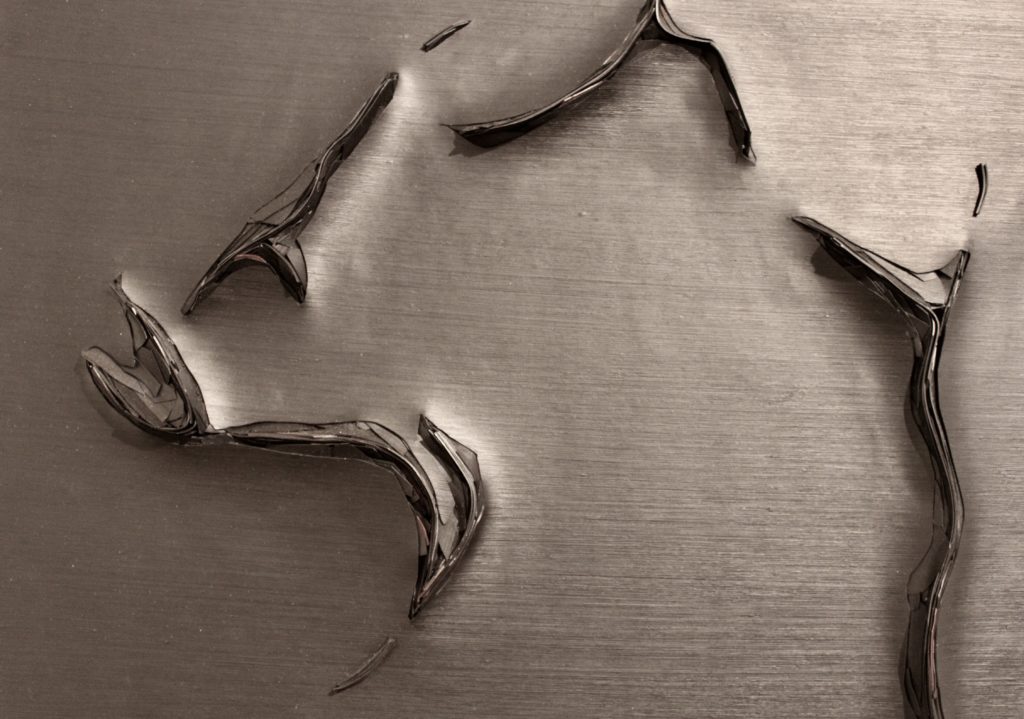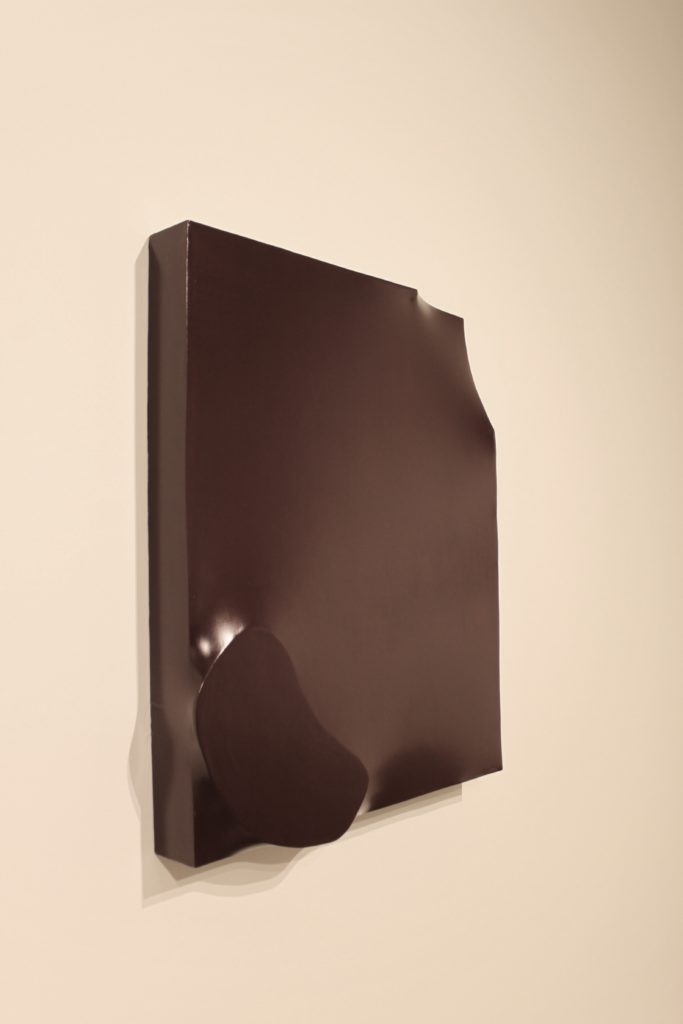Visual art can be a powerful force of communication, it can change perceptions, open minds, and tug on viewers’ heartstrings. This power is partly responsible for art and visual communication having such a dominant role in our society; we see advertising, paintings, drawings, installations and even graffiti works that stop us dead in our tracks and make us think, fee, or consider. Making art that has this kind of power is not an easy task nor a common task — not all art can have this kind of power. When one sees artwork of great power, however, they know it instantly. If you’re looking for an instant like this, you’ve got a chance now thanks to Irvine Fine Arts Center. Inside their Gallery 1, “Time Under Tension” highlights the work of two artists who will give you a memorable lesson on the power of art.
Standing in front of the sculptural wall art of Eduardo Aispuro in “Time Under Tension,” you are immediately confronted with a gut reaction, forcing you to consider what exactly is making you feel what you are feeling. They are abstract three-dimensional wall sculpture-painting hybrids that upon viewing recall themes of both man and nature and the struggle of life and death in simple shapes and forms. Some shaped canvases with strange corners, others with odd shapes pushing their way out toward the viewer from behind the shining canvases. His works are mingling with that of Patricia Liverman, who also makes three-dimensional wall paintings, slightly less physical than Aispuro’s, but just as complicated.

Time Under Tension (Evan Senn)
Liverman’s works are smaller and take on an unassuming position until you are 10 or 12 inches away from the jagged surface of her finely assembled paintings. Full of cracks and crevasses, built up with a palpable tension pushing the perceived boundaries of what is real and what is imaginary to their respective limits. Some of Liverman’s pieces resemble granite covered topographical maps with small pieces assembled into mountain ranges and bodies of water, or environmental occurrences in the natural world like mold growth or dried out riverbeds; but their compositions have a symbolic pressure or struggle residing in their forced edges. You feel the movement of time, the push of responsibility, the advent of change forcing her edges to find new breath and a different path to follow, like the roots of trees pushing through concrete over time just to keep growing into themselves.
Looking at these familiar moments rendered in oil paint shards and bits, we are forced to consider our own moments of change and discovery — what has pushed us into ourselves to a point of rupture or regrowth? The shimmering blacks Liverman uses in her works also lends to the introspection and soul-searching, recalling a dark abyss of nothingness or a combination of everything. By creating painted chaos and visual change and growth, Liverman encourages us to look back within ourselves.

Time Under Tension (Evan Senn)
Aispuro’s works seem to be documenting the actual occurrence of change as it is happening, we get an intimate look at change being made. With simple materials and three-dimensional play underneath his painted canvases, the unusual forms in Aispuro’s artworks are pushing new shapes out of the expected square or rectangle composition to create something unique. The canvases are pulled taut, as if they might break soon from the pressure — this is a feeling every person can resonate with, as if we might bust open or tear from the stress of something difficult. This tension is unavoidable in our minds every now and again, but like these paintings, we never break or tear from the pressure, we are malleable and adaptable, instead we will stretch and make room for the growing change.
Eduardo Aispuro is based in Southern California and is predominantly interested in the strange relationship between perception and observation as well as the relationship between art object and viewer. The attention he gives to the picture plane and the surface of his works acknowledges the importance of the skeletal structure of his practice, both in his use of symbolism and in his use of materials.
Southern California-based Patricia Liverman is fascinated with creating “scars” within her paintings, reassembling fragments to create new wholes. Her process involves utilizing previously painted works and repurposing them for new pieces, further supporting the idea of scars and new growth from old wounds. The new creations then carry with them a history of her own practice, of the works that preceded them, layers of intention and emotion, physical labor and love, pushed together with new meaning and new energy to create something beautiful and fresh. This practice parallels Liverman’s interest in paint as a malleable, adaptive physical material and as a means of representation and emotional significance.

Time Under Tension (Evan Senn)
Both Aispuro and Liverman create works that are steeped in art history with nods to Minimalism and Post-Minimalism, and specific influential nods to artists like Lee Bontecou and Tony DeLap. Although they reference the history of the art object and what has already been done in three-dimensional painting and art-making, they both approach their own practice with unique intention and vision, creating original artworks that not only help viewers to stop, consider and relate, but also that help solidify their contributions to the larger contemporary art discourse as something worthwhile and meaningful. Through shards of memories and stretching protrusions, Aispuro and Liverman facilitate introspection and wonder, bringing us closer to ourselves through art.
“Time Under Tension,” located in Gallery 1 at Irvine Fine Arts Center, is on view through August 10. Heritage Community Park, 14321 Yale Ave., Irvine.
Advertising disclosure: We may receive compensation for some of the links in our stories. Thank you for supporting Irvine Weekly and our advertisers.

